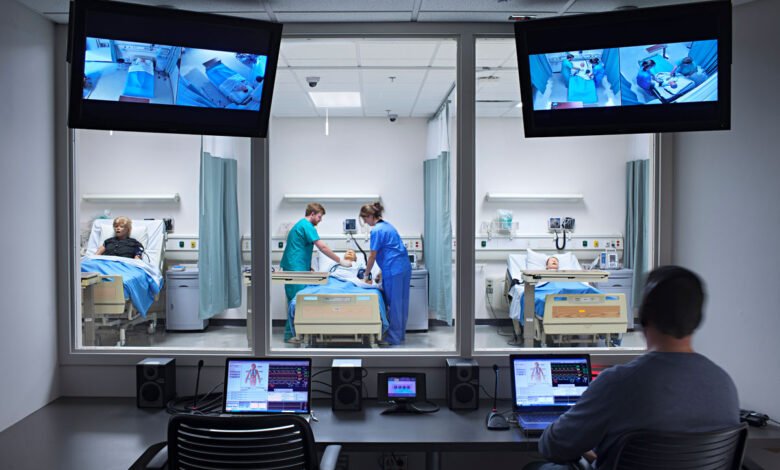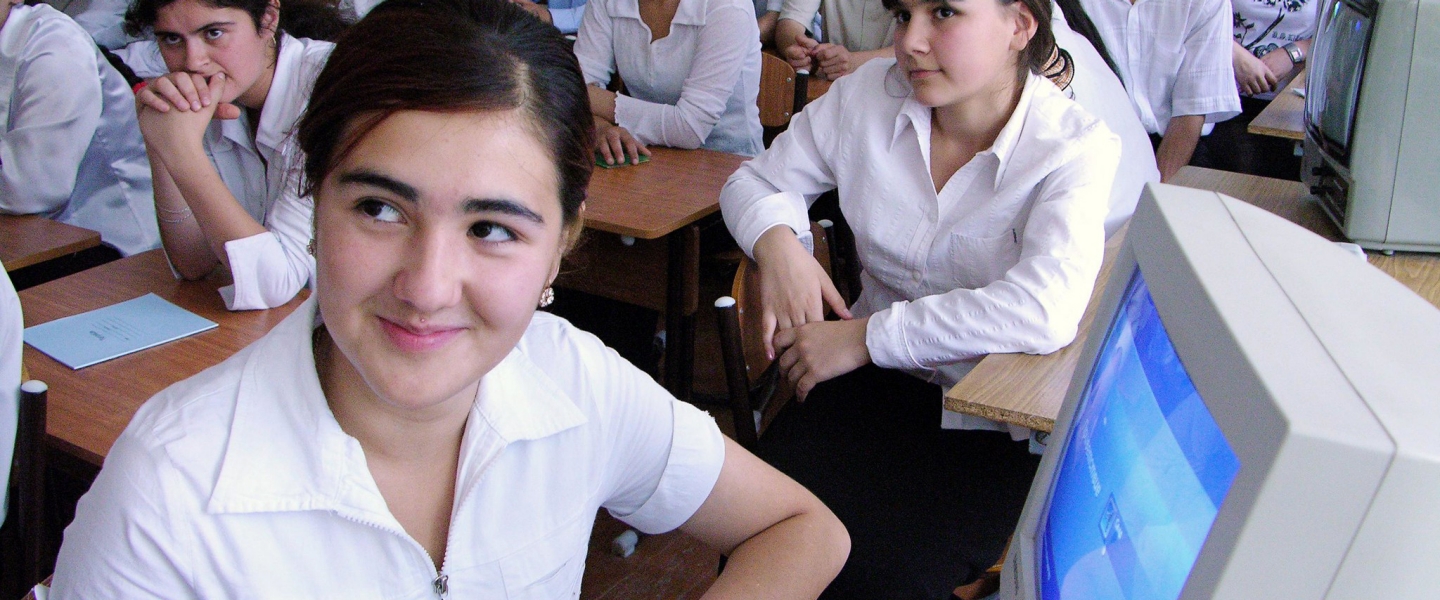Health science education using integrated ed-tech

Health science education using integrated ed-tech
Recent technological developments have significantly impacted careers in the health sciences. Not only have technological breakthroughs improved therapies, but they have also had an impact on health science education and altered the expectations that institutions of higher learning in the field have of education technology (ed-tech) suppliers.
New-age technologies like artificial intelligence, the internet of things (IoT), and cloud computing are increasingly essential to the field of health research, and the pace of innovation in the medical sector is continuing to pick up. Academic institutions in the field of health sciences have higher demands for edtech companies. Since clinical education (internships) is a crucial component of health science education, there haven’t been any effective management strategies for a very long time.
However, this situation cannot continue. Clinical education offers the hands-on experience that health science students need, and for the majority of health science courses, students are required to complete many internships in order to become health science professionals. Additionally, it used to be acceptable for colleges to use many pieces of software to manage various facets of education, but that is no longer the case. Market pressure is mounting for a universal answer.
The worldwide market for medical education was estimated to be worth $90.66 billion in 2021, and it is anticipated to grow at a CAGR of 8.70 per cent between 2021 and 2028 to reach a value of $162.56 billion (2022–2028). 1.36 million students are reportedly enrolled in medical school, according to the World Health Organization.
One place, one solution
Universities seek solutions that can address the comprehensive needs of health science education, including didactic and clinical instruction, curriculum administration, and compliance management, and eventually address the needs of the complete healthcare system in one location, with one solution. There aren’t any ed-tech solutions on the market right now that offer an integrated solution.
Health science educational institutions will find systems that can meet all of their demands on a single, integrated platform to be an attractive partner.
Understand your clients’ needs and their industry

Before creating any B2B software solutions, such as the integrated ed-tech platforms, suppliers must have empathy for their clients, understand how they go about their daily jobs, and come up with solutions that make it easier for them to do their jobs. The learning curve may be steep, but before creating a tech solution for a customer, a solution provider needs to collaborate with them and comprehend their demands.
Management framework for health science education in India
The ability to foster greater collaborations between cutting-edge health IT businesses and government agencies is one of the potentials that are still mostly unrealized. Accelerated cooperation between health science, medical degrees, nursing, physical therapy, and hospital chains, supported by strict but less time-consuming standards, will result in considerably larger and qualitative coverage of an increasing number of individuals in need of medical attention.
India has begun to scratch the surface of comprehending cloud computing and its full potential in the healthcare industry, particularly the customized product systems for customers. The pandemic served as a catalyst for this tectonic change in more ways than one, forcing the nation’s top healthcare providers to see the full potential of cloud-based healthcare solutions.
Building an integrated suite of products is now necessary to assist the teaching of health science. Customers now want quick, time-saving goods that offer excellent customer service. Learning and teaching strategies at postsecondary institutions are being impacted by developments in information and communication technologies. This study sought to ascertain whether interprofessional team process skills could be taught in a blended learning environment without compromising the course’s collaborative Group Investigation Model (Sharan and Sharan, 1992) or pedagogical approach.
These skills are typically taught in a small group face-to-face classroom setting. Students studying health science have been required to complete a course on interprofessional team development which utilizes a blend of face-to-face and synchronous technology in an effort to impart team process skills. A blended learning format was hypothesized to not significantly differ from traditional face-to-face formats in the development of interprofessional team knowledge, skills, and attitudes.
On the basis of demographic data, computer expertise, and interprofessional team attitudes, knowledge, and abilities, the two formats were assessed. The three key findings are:
(a) there are no appreciable differences between student groups in terms of developing teamwork skills;
(b) there are differences between the groups in terms of team dynamics, and
(c) students in the blended learning class perceive their course learning objectives as having been more successfully met. The outcomes offer proof that our blended learning approach is effective without sacrificing pedagogy. Additionally, they contend that this style improves students’ opinions of their education.
Healthcare Scenario in India

The modern medical systems were first introduced to India, a nation with a long history of medical knowledge, in the 17th century. India attained independence in 1947 and Federal Republic status in 1950. The health industry has seen a number of changes since independence. However, issues including a higher population density, a major portion of the population having a low socioeconomic standing, and a low literacy rate in various regions of the nation have led to poor health indices.
Historical Background
Medical and health sciences have a long and illustrious history in India. The ancient Indian medical system employed a comprehensive healing strategy. The Vedic period (5000 BCE), during which a description of the Hindu god of medicine, Dhanwanthari, first appeared, may be used to trace the development of healthcare in India. Ayurveda, an ancient Indian system of holistic medicine, is said to have evolved from Atharvaveda, one of the four Vedas.
The long heritage of scientific healthcare among the Indian people is attested to by the philosophy of Ayurveda, “Charaka Samhita,” the well-known medical treatise written by Charaka, and the surgical prowess espoused by Sushrutha, the founder of Indian surgery. India’s historical best hospitals were those constructed by King Ashoka (273-232 BCE). In the Universities of Taxila and Nalanda, medicine was taught using Indian medical ideas.
Traditional to Modern Medical Transition

The Thridhosha idea of sickness is used in Ayurveda. Vata (wind), Pitta (gall), and Kapha are the three biological components that Thridhosha identifies as being connected to a patient’s health (mucus). Similar to the notion advanced by Greek medicine, the disease is defined as a disruption in the balance of the three doshas. Even though Unani and homoeopathy are not indigenous to India, they are nonetheless widely used in that country.
The development of the modern medical system in India occurred during the course of the 17th and 18th centuries, beginning with the entrance of European Christian missionaries in South India in the previous century. The first modern military hospital was established by the British in Chennai in 1664, and a second one for civilians followed in 1688. The first medical college was established in Calcutta in 1835, while further medical schools were established in Mumbai in 1845 and Chennai in 1850.
Health Hypothesis
India now offers far more healthcare services than it did ten years ago.
India has a 1:2148 doctor-to-population ratio. 64 baby deaths occur for every 1,000 live births. Life expectancy at birth increased from 37.2 years to 60.6 years within the same time period, while the total mortality rate decreased from 27.4 per 1,000 people in 1991 to 8 per 1,000 people in 2002.
Significant progress has been made since India gained independence in the area of health promotion. Cholera and other associated illnesses have a lower fatality rate, and smallpox has been eradicated. However, cholera outbreaks continue to occur often, and TB prevalence is not negligible. It is necessary to improve the situation with regard to public cleanliness, preventative healthcare, communicable disease control, and health education.
Noncommunicable illnesses associated with urbanization, such as diabetes mellitus, hypertension, cardiovascular diseases, and cancer, are contributing factors to the diseases of poverty and hunger. In addition, there is a rise in geriatric issues, road accidents, and AIDS-related diseases.
Although there are hospitals, clinics, public health centres, and other medical facilities, they are not enough to meet the expanding demands of India’s sizable population. Improved access to high-quality medical care is required in rural areas. Health officials are particularly concerned about the insufficient number of physicians working in hospitals in the public sector.
Additionally, the infrastructure needed in hospitals, such as the supplies, furnishings, and equipment, is insufficient to meet the needs of the populace. Government spending on healthcare services falls short of World Health Organization (WHO) standards for the gross domestic product in healthcare, which exacerbates the issue.
The private, cooperative, and other non-profit sectors have built hospitals and are offering healthcare services to the general population despite the governmental sector’s lack of expansion. In addition, the Indian government is making significant improvements to healthcare. To address the widespread issues in the healthcare industry, for instance, the government has occasionally formed a number of committees.
Additionally, it has shown a significant commitment to population control, particularly via the establishment of family planning initiatives designed to do so.
The Right to Health and Protection Advances in Healthcare

The Directive Principles of state policy, included in Articles 39, 41, 42, and 47 of the Indian Constitution, outline the state’s obligations to ensure basic nourishment, the basic quality of living, public health, worker protection, and specific provisions for the disabled, and other health requirements. The right to life and personal freedom is guaranteed by Article 21 of the Indian Constitution and is a basic right.
The judiciary has included the right to health under Article 21 in accordance with the Universal Declaration of Human Rights and numerous other advances in the Indian healthcare industry. A national health strategy aimed at “health for all” was implemented by the Indian government in accordance with the acknowledgement of the fundamental right to health. The government has established a revised deadline of 2015 in hopes of achieving the millennium development objectives by that time, even though the nation wasn’t able to satisfy all the criteria by the original deadline.
The Indian healthcare system has changed as a result of judicial activism on the part of the courts. The right to health is now recognized as a basic right, hospitals are covered by the Consumer Protection Act, guaranteeing prompt and urgent care for patients in all hospitals (patients can go to the Consumer Forums to resolve complaints), and negligence-related issues are dealt with. The Transplantation of Human Organs Act, Prenatal Diagnostic Techniques Act, Medical Termination of Pregnancy Act, and other laws have been introduced by the legislature to enhance healthcare.
Health Care Sector Insurance
Healthcare insurance is widely available in the majority of industrialized nations. The insurance market is only just starting to grow in India, though. Only a small number of businesses provide insurance in the healthcare industry, and only a small portion of Indians have health insurance coverage. However, it is anticipated that insurance would play a significant role in the Indian healthcare system in the near future.
Informational Resources and Information Technology’s Effects on Healthcare
A national-level assimilation system for data is ineffective, and there are no consolidated statistics on the healthcare service. There are, however, certain national institutions and a few smaller centres that are excellence islands. Some of the institutions provide the latest in information technology, including a computerized hospital information system. The Indian Space Research Organization (ISRO) has also started a telemedicine initiative that might offer specialized care to far-flung places.
Medical Travel
India, the home of Ayurveda, offers a vast range of unique medical procedures. Additionally, there are hospitals that practice contemporary medicine and offer high-quality care at a reasonable price. When compared to the cost of medical care in Western nations, India’s facilities for treatment, natural beauty, and tourism spots all around the country will make it a popular destination for people of all kinds.
Accreditation
The National Accreditation Board for Hospitals (NABH), which is a subsidiary of the Indian Quality Council, released hospital standards that are applicable to Indian hospitals in 2006. A major justification for certifying the hospitals is the probability of a surge in healthcare insurance as well as the opportunity for health tourism. Hospitals’ top priorities in the next years will thus be accreditation and high-quality healthcare.
Conclusion

In the years after independence, India’s health standards have dramatically improved. The fiscal resources for the health sector should, however, in the opinion of many, be enhanced. To attempt to document health data, national efforts must make use of international information technology breakthroughs. India will have a big effect on the global health scene thanks to its persistent population control measures and governmental commitment to achieving the millennium development objectives in the health sector.
edited and proofread by nikita sharma




